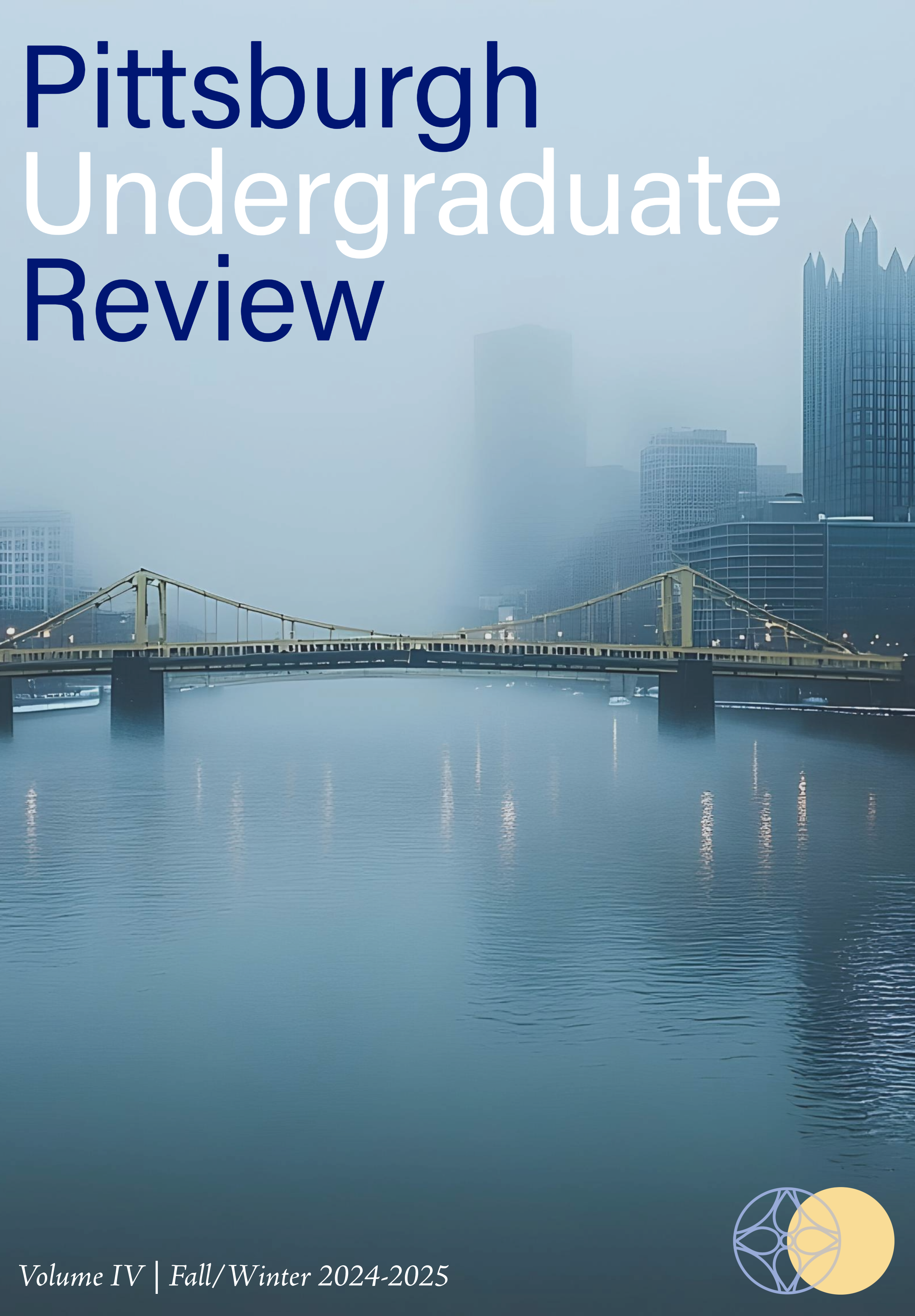Pronunciation of Novel Phonemes in Mandarin Chinese for L2 Speakers
DOI:
https://doi.org/10.5195/pur.2025.104Keywords:
Novel Phonemes, Mandarin, L2 SpeakersAbstract
Taking on any second language (L2) can be a challenge as learners are faced with the task of learning new vocabulary, structures, and even sounds. Pronunciation specifically can cause issues for learners when they encounter sounds (i.e., phonemes) that do not exist in their first language(s) (L1). The Perceptual Assimilation Model states that speakers will assimilate unfamiliar phonemes to those they are more familiar with in their L1, and the Revised Speech Learning Model states that speakers have the ability to create new phonetic categories for unfamiliar phonemes in an L2, just as they do when learning an L1 in childhood. For this study, L1 speakers of English learning L2 Mandarin Chinese were asked to pronounce phonemes that do not occur in English to determine whether these learners replace these phonemes with ones that occur in English, or if they accommodate their production to the standard Mandarin pronunciation by adding a new phonetic category. By analyzing formant data from intermediate-level Mandarin Chinese speakers' speech, multiple compensation strategies were displayed, employing tactics from multiple documented models of phonological acquisition.
References
American Speech-Language Hearing Association. n.d. “Mandarin Phonemic Inventory.” American Speech-Language Hearing Association. https://www.asha.org/siteassets/uploadedfiles/multicultural/mandarinphonemicinventory.pdf?srsltid=AfmBOoq83LzqDHW7-mhCk8OpvqVU_mjBVYUQujaug1UOsYCd2rDhB14I.
Baker-Smemoe, Wendy, and Laura C. Smith. 2010. “The Impact of L2 Dialect on Learning French Vowels: Native English Speak English Speakers Learning Que´be´cois and E ers Learning Que´be´cois and European F opean French.” Canadian Modern Language Review 66:711-738.
Best, Catherine T., and Michael D. Tyler. 2007. “Nonnative and second-language speech perception.” Language Experience in Second Language Speech Learning. 10.1075/lllt.17.07bes.
Boersma, Paul, and David Weenink. 2024. Praat: doing phonetics by computer. 6.4.18. Computer program.
Cheng, Fenglan. 2023. “The Role of First Language in Second Language Acquisition.” Atlantis Press Proceedings of the 2022 4th International Conference on Literature, Art and Human Development (ICLAHD 2022), 1236-1243. 10.2991/978-2-494069-97-8_158.
Flege, James E. 1991. “The Interlingual Identification of Spanish and English Vowels: Orthographic Evidence.” Quarterly Journal of Experimental Psychology 43 (3): 701-731. https://doi.org/10.1080/14640749108400993.
Flege, James E., and Ocke-Schwen Bohn. 2021. “The Revised Speech Learning Model (SLM-r).” Second Language Speech Learning: Theoretical and Empirical Progress, 3-83. 10.1017/9781108886901.002.
Fon, Janice. 2020. “The Phonetic Realizations of the Mandarin Phoneme Inventory: The Canonical and the Variants.” In Speech Perception, Production and Acquisition, Multidisciplinary approaches in Chinese languages, 11-36. N.p.: Springer, Singapore. https://doi.org/10.1007/978-981-15-7606-5_2.
Hayes-Harb, Rachel, and Shannon Barrios. 2021. “The influence of orthography in second language phonological acquisition.” Language Teaching 54, no. 3 (July): 297-326. https://doi.org/10.1017/S0261444820000658.
Jiang, Xiaoli, and Andrew D. Cohen. 2018. “Learner strategies for dealing with pronunciation issues in Mandarin.” System 76:25-37. https://doi.org/10.1016/j.system.2018.04.012.
Lee, Wai-Sum, and Eric Zee. 2003. “Standard Chinese (Beijing).” Journal of the International Phonetic Association 33 (1): 109-112. 10.1017/S0025100303001208.
Liu, Qian. 2011. “Factors Influencing Pronunciation Accuracy: L1 Negative Transfer, Task Variables and Individual Aptitude.” English Language Teaching 4, no. 4 (December). 10.5539/elt.v4n4p115.
Downloads
Published
How to Cite
Issue
Section
License
Copyright (c) 2025 Rebecca Gips

This work is licensed under a Creative Commons Attribution 4.0 International License.
Authors who publish with this journal agree to the following terms:
- The Author retains copyright in the Work, where the term “Work” shall include all digital objects that may result in subsequent electronic publication or distribution.
- Upon acceptance of the Work, the author shall grant to the Publisher the right of first publication of the Work.
- The Author shall grant to the Publisher and its agents the nonexclusive perpetual right and license to publish, archive, and make accessible the Work in whole or in part in all forms of media now or hereafter known under a Creative Commons Attribution 4.0 International License or its equivalent, which, for the avoidance of doubt, allows others to copy, distribute, and transmit the Work under the following conditions:
- Attribution—other users must attribute the Work in the manner specified by the author as indicated on the journal Web site;
- The Author is able to enter into separate, additional contractual arrangements for the nonexclusive distribution of the journal's published version of the Work (e.g., post it to an institutional repository or publish it in a book), as long as there is provided in the document an acknowledgement of its initial publication in this journal.
- Authors are permitted and encouraged to post online a prepublication manuscript (but not the Publisher’s final formatted PDF version of the Work) in institutional repositories or on their Websites prior to and during the submission process, as it can lead to productive exchanges, as well as earlier and greater citation of published work. Any such posting made before acceptance and publication of the Work shall be updated upon publication to include a reference to the Publisher-assigned DOI (Digital Object Identifier) and a link to the online abstract for the final published Work in the Journal.
- Upon Publisher’s request, the Author agrees to furnish promptly to Publisher, at the Author’s own expense, written evidence of the permissions, licenses, and consents for use of third-party material included within the Work, except as determined by Publisher to be covered by the principles of Fair Use.
- The Author represents and warrants that:
- the Work is the Author’s original work;
- the Author has not transferred, and will not transfer, exclusive rights in the Work to any third party;
- the Work is not pending review or under consideration by another publisher;
- the Work has not previously been published;
- the Work contains no misrepresentation or infringement of the Work or property of other authors or third parties; and
- the Work contains no libel, invasion of privacy, or other unlawful matter.
- The Author agrees to indemnify and hold Publisher harmless from Author’s breach of the representations and warranties contained in Paragraph 6 above, as well as any claim or proceeding relating to Publisher’s use and publication of any content contained in the Work, including third-party content.
- The Author agrees to digitally sign the Publisher’s final formatted PDF version of the Work.



